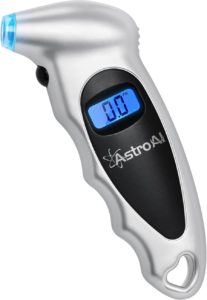Maintaining proper tire pressure is a critical aspect of vehicle safety. It can affect fuel efficiency, tire longevity, and even cause accidents. To help prevent these issues modern vehicles come equipped with a tire pressure monitoring system (TPMS). The Audi Q5 uses an indirect tire pressure monitoring system (ITPMS) to ensure the safety of its drivers on the road. In this article, we will provide a comprehensive overview of the Audi Q5 TPMS, including its components, functionality, and how to reset it.
All of the following information is applicable to all Audi Q5 Models such as the Audi SQ5.
Audi Q5 / SQ5 Tire Pressure Light Reset Procedure
Be sure to fill your tires to the correct PSI prior to following this procedure.
2017- Present Version
With the car ON or RUNNING.
Select VEHICLE on the infotainment system.
Select SETTINGS & SERVICE.
Select TIRE PRESSURE MONITORING.
Select STORE TIRE PRESSURES.
Select YES, STORE NOW.
Infotainment system will read “The current tire pressures have been stored” meaning you have successfully reset the TPMS.
2008-2017 Version
Turn the ignition key to the “ON” position or have the vehicle running.
Select MENU and then CAR on the MMI control panel behind the shifter.
Select “SERVICING” and then “TIRE PRESSURE MONITORING.”
Select “STORE TIRE PRESSURES” and then “CONFIRM.”
Audi says to drive the vehicle for at least 20 minutes at speeds above 12 mph to allow the system to recalibrate.
How Does the Audi Q5 / SQ5 TPMS Work?
The Audi Q5 uses an indirect tire pressure monitoring system.
The system monitors the rotational speed of each wheel using the ABS wheel speed sensors. (Not individual TPMS sensors in each wheel)
When tire pressure drops below recommended levels, the tire diameter decreases and rotational speed increases.
The system compares the rotational speed of each wheel.
If there is a significant difference, it triggers a warning light on the dashboard.
The warning light indicates which tire or tires are underinflated.
When the tire light comes on, pull over and check tire pressures as soon as possible.
When to Reset Audi Q5/SQ5 Tire Pressure Light?
After checking and adjusting the tire pressure to the recommended level.
After rotating the tires to ensure that the system is reading the correct wheel positions. This includes after wheel balancing or alignments.
After replacing one or more tires.
If the vehicle battery dies or is jumped.
If any part of the ABS or wheel speed sensors are replaced.
Any time a wheel or tire is taken off and put back on.
What are Common Causes for Tire Pressure Lights to Turn On?
Low tire pressure due to a puncture or slow leak can cause the diameter of the tire to decrease, leading to a difference in rotational speed that triggers the warning. Keep in mind that Audi uses high performance wheels with low profile tires that are highly susceptible to rim cracks causing air pressure leaks.
Extreme temperature changes can cause tire pressure to fluctuate and trigger the TPMS warning light.
An issue with the vehicle’s computer system can cause the tire warning to turn on.
Mismatched tire sizes or tire types can cause changes in wheel rotation speeds. Always use OEM size wheels and tires to prevent this problem.
Faulty ABS or wheel speed sensors will trigger the TPMS warning light.
Excess vehicle weight or load will impact the wheels rotational speed causing a TPMS warning light.
What Happens When Tires are Underinflated?
If an Audi Q5 has tires with less air pressure than the recommended amount, it will have negative effects on the vehicle. First, tires will wear out faster due to increased stress when driving. Additionally, the car’s fuel efficiency will decrease since it requires more energy to move the car when the tires are not fully inflated. This results in higher fuel consumption leading to higher expenses for the driver. Furthermore, the car’s handling, stability and braking can be negatively impacted by underinflated tires, making it more challenging to control and increasing the risk of accidents. Therefore, it’s crucial to check and maintain the correct tire pressure regularly to ensure safe and efficient driving. We recommend checking at least once a month and before long trips.
Please note that this blog post contains Amazon affiliate links. This means that if you make a purchase through one of these links, the author of the blog may earn a small commission at no extra cost to you. The author only recommends products that they personally use and believe in. Thank you for supporting this blog.



